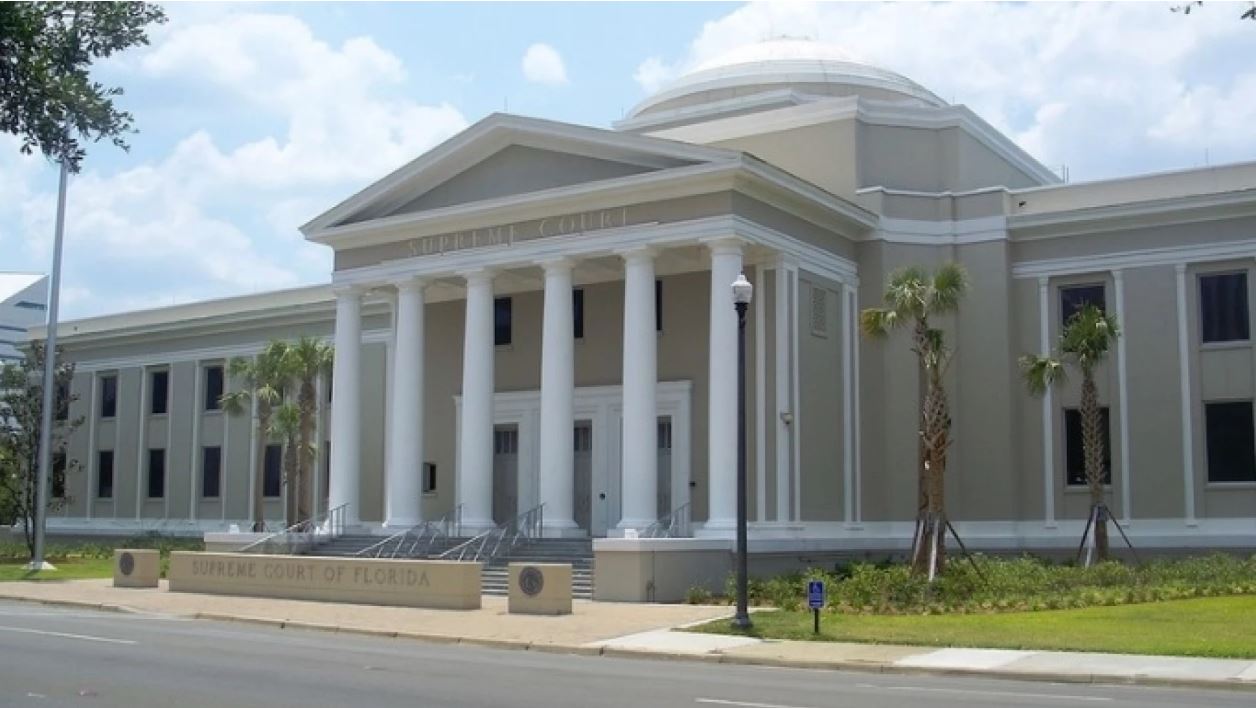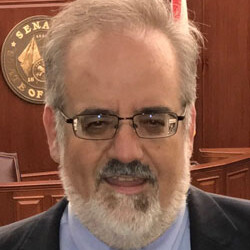The Florida Supreme Court on Thursday heard arguments about the constitutionality of a congressional redistricting plan that Gov. Ron DeSantis pushed through the Legislature in 2022, with Chief Justice Carlos Muniz pointing to potentially far-reaching future effects of the court’s decision.
As he questioned Daniel Nordby, an attorney for the Legislature, about key issues, Muniz said the case could involve “potentially a paradigm shift.”
“What does redistricting 2030 look like if you win?” Muniz asked.
Voting-rights groups went to the Supreme Court after the 1st District Court of Appeal in December upheld the redistricting plan. The case centers on a North Florida congressional district, District 5, which in the past elected Black Democrat Al Lawson but was overhauled in 2022.
The groups argue that the plan violated a 2010 state constitutional amendment that prohibited drawing districts that would “diminish” the ability of minorities to “elect representatives of their choice.” White Republicans won all North Florida congressional districts in 2022 after the plan was adopted.
Christina Ford, an attorney for the groups, said during Thursday’s 80-minute hearing that the plan violated a Florida Supreme Court precedent about how to apply what is known as the “non-diminishment” provision in the constitutional amendment, which was called the Fair District Amendment.
“This court should resolve this case by adhering to its existing precedent on the diminishment standard, under which petitioners have unquestionably shown a violation of the Florida Constitution,” Ford said. “And this is not particularly a close call.”
But in getting the 2022 plan passed, DeSantis argued that keeping a district similar to the one that elected Lawson would be an unconstitutional racial gerrymander under the U.S. Constitution’s Equal Protection Clause. The Lawson district stretched from Jacksonville to Gadsden County, west of Tallahassee, picking up sizable numbers of Black voters.
The 1st District Court of Appeal’s main opinion said protection offered under the non-diminishment provision and under the federal Voting Rights Act “is of the voting power of ‘a politically cohesive, geographically insular minority group.’” It said linking voters across a large stretch of North Florida did not meet such a definition of cohesiveness.
State Solicitor General Henry Whitaker and Nordby on Thursday repeatedly cited the lack of compactness of the former Lawson district as they urged the Supreme Court to uphold the plan.
“The benchmark CD 5 (the old Lawson district) that we are talking about absolutely is a racial gerrymander,” Whitaker said. “Because there’s no dispute that race was the reason that district was drawn. … There can be little dispute that it is woefully non-compact. It snakes in this sprawling 200-mile area to surgically capture the Black populations in Gadsden and Leon County and link them with Duval County.”
In questioning Nordby, Muniz said the Legislature approached the Fair District Amendment “in kind of a straightforward way” before the federal equal-protection issues were raised.
“(In the past) everybody’s talking as if we (lawmakers) need to preserve the minority districts. That’s the priority. Then we work around that. It seems like now there’s potentially a paradigm shift where you maybe can’t just follow the roadmap that the FDA (the Fair District Amendment) itself lays out,” Muniz said. “So what is the Legislature supposed to do going forward?”
Nordby agreed it is an “important question” but said the Legislature can draw districts that comply with the different requirements in most cases. He pointed, for example, to two compact congressional districts in Miami-Dade County that in 2022 elected Black Democrat Frederica Wilson and Hispanic Republican Maria Elvira Salazar.
“What was possible in South Florida simply isn’t possible in North Florida,” Nordby said.
The disputed plan will be used again in the November elections. It typically takes the Supreme Court months to rule in cases after hearing arguments.
DeSantis in 2022 vetoed a congressional map passed by the Republican-controlled Legislature before muscling through the plan that spurred the lawsuit.
To try to assuage DeSantis, the Legislature’s map included two alternatives for District 5 — one that would have been in Duval County and one that would have been similar to the old Lawson district. The Legislature’s Duval County proposal sought to comply with the non-diminishment standard by incorporating areas of the county with large Black populations.
But DeSantis issued a veto, prompting the Legislature to pass a plan to his liking. The new Congressional District 5 includes parts of Duval and St. Johns counties and is represented by Republican John Rutherford.
Justice Charles Canady did not take part in the arguments Thursday, with Muniz saying he is recused from the case. Muniz did not explain the reason, but Canady is married to state Rep. Jennifer Canady, R-Lakeland.







